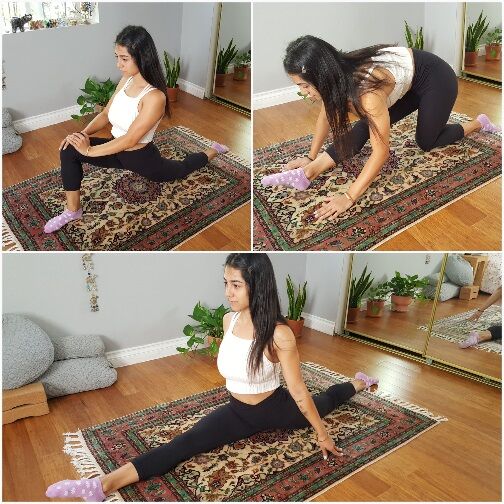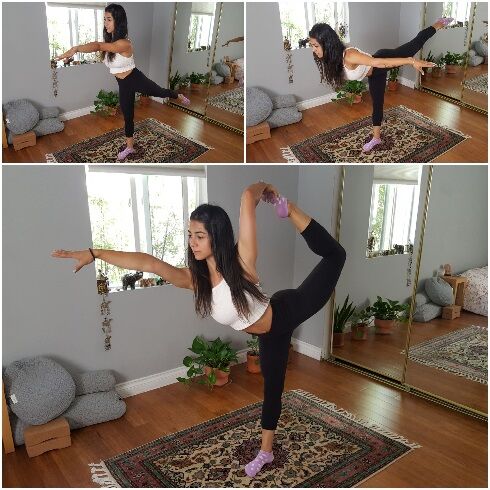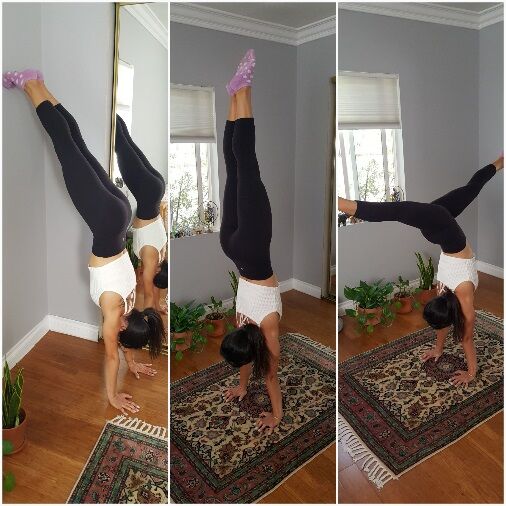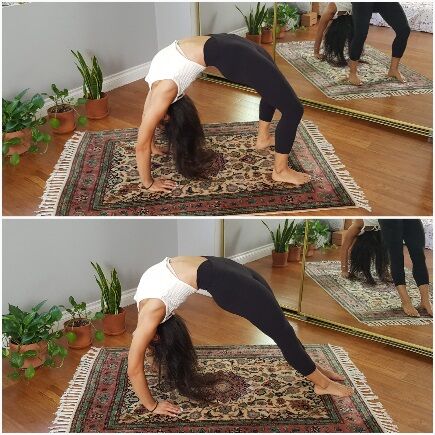Home Acrobatics Exercises for Complete Beginners
Want to learn acrobatics at home? It's a great way to improve fitness, flexibility, and coordination. Many worry about safety or where to start, especially when thinking about acrobatics training at home. This guide shows you how to practice acrobatics exercises safely at home. It is great for both beginners or experienced individuals getting better in acrobatics. These are great exercises for beginner acrobatics.
Before You Begin: Safety First!
Before you even think about attempting your first forward roll, creating a safe practice environment is paramount. This is especially vital when considering how to learn acrobatics at home.
Creating a Safe Practice Space
Clear the area of any furniture, sharp objects, or tripping hazards. Ensure you have ample space to move around freely without hitting anything. Using mats is highly recommended, especially for tumbling skills.
Importance of Warm-up and Cool-down
A proper warm-up prepares your body for the physical demands of acrobatics, reducing the risk of injury. A cool-down helps your body recover and improves flexibility.
Listening to Your Body
Pay attention to your body's signals. Don't push through pain. Stop if you feel any discomfort and rest. It is normal for it to take time to learn acrobatic exercises for beginners.
When to Seek Professional Guidance
While many skills can be learned at home, consider joining a class or seeking guidance from a qualified instructor for more advanced skills or if you have any concerns about your form or safety.
Warming Up for Acrobatics
A good warm-up is essential for any acrobatics training.
Dynamic Stretches
- Arm circles (forward and backward)
- Leg swings (forward, backward, and sideways)
- Torso twists
- Side stretches
Cardio
- Jumping jacks (30 seconds)
- High knees (30 seconds)
- Butt kicks (30 seconds)
Visual:
Here is a table you can follow for your warm-up:
| Exercise | Time/Repetitions |
|---|---|
| Arm Circles | 10 forward, 10 backward |
| Leg Swings | 10 each leg, each direction |
| Torso Twists | 10 each side |
| Jumping Jacks | 30 seconds |
| High Knees | 30 seconds |
Cooling Down After Practice
After your training, you need to cool down. Cooling down helps with recovery, and flexibility and reduces the risk of injuries. It is a key component of your acrobatics exercise routine.
- Static Stretching: Hold each stretch for 30 seconds. Focus on major muscle groups like hamstrings, quads, hip flexors, back, and shoulders.
Essential Acrobatics Skills
Now, let's break down some fundamental acrobatic exercises.
Flexibility Skills

Flexibility is an important factor for all acrobats. In addition to preventing injury, it’s a skill that can be incorporated as you perform different poses and tricks within acrobatics.
- Pike: Sit on the floor with both legs extended in front of you. Extend your arms above your head and sit up as tall as you can. Keeping your core engaged and your back flat, slowly hinge forward from your hips to fold over your legs as much as you can while reaching toward your feet with both hands. Hold for 30 seconds.
- Common Mistakes: Rounding the back, forcing the stretch.
- Progression: Try placing yoga blocks under your feet to elevate them.
- Splits: To start, first get into a lunge position with your back knee on the floor. Gently press your hips forward to open your hip flexors. Next, press your hips back to straighten your front leg. Hold this position for 30 seconds to stretch your hamstring then slowly slide your front leg forward while keeping your hips squared off. Only go as far as your body allows you to go. As time goes on, your body will allow itself to get lower into a full split position. It takes time and practice.
- Common Mistakes: Forcing the split, not keeping hips square.
- Progression: Use yoga blocks under your hands for support.
- Straddle/Pancake: Sit on the floor in an open straddle position with straight legs. The more flexible you are, the wider your legs will be. While keeping your back as straight as possible slowly reach forward to bring your body as close to the floor as you can. Hold for 30 seconds.
- Common Mistakes: Rounding the back, bouncing in the stretch.
- Progression: Try to bring your chest to the floor while keeping your back flat.
Balance Skills

Balance is another important factor for acrobats. Good balance helps you stabilize your position when performing skills and allows you to transition from one skill to another with ease.
- Arabesque/Scale: Start with one foot forward and your opposing leg behind you. Carefully shift your weight over your supporting leg while lifting your back leg off the ground. Place one arm forward for counterbalance and extend the opposite arm beside you. As you become comfortable with this position you can practice hinging forward while maintaining your balance to bring your back leg higher creating a scale position.
- Common Mistakes: Not engaging the core, looking down.
- Progression: Try lifting your back leg higher while keeping your chest lifted.
- Scorpion/Needle: Place one foot forward and the other foot behind you. Shift your weight forward to the supporting leg. Once you’ve found your balance carefully reach back to grab and lift your leg off the ground and extend your opposite arm forward for counterbalance. As you become more flexible you can begin to pull your leg up into a standing split position (needle).
- Common Mistakes: Losing balance, not engaging the core.
- Progression: Work on increasing the height of your back leg.
- Handstand:
 Start in a standing lunge position with your arms extended above your head. Hinge forward into a T-position to reach as far forward as you can. Swing your back leg up while pressing off the floor with the opposite leg and bring both legs together. Press through your shoulders and keep your arms as straight as you can help find and maintain your balance.
Start in a standing lunge position with your arms extended above your head. Hinge forward into a T-position to reach as far forward as you can. Swing your back leg up while pressing off the floor with the opposite leg and bring both legs together. Press through your shoulders and keep your arms as straight as you can help find and maintain your balance.
- Common Mistakes: Arching the back, not pushing through the shoulders.
- Progression: Practice against a wall. If this is too difficult you can start with your back against a wall. Extended both arms up and place them on the floor in front of you. Slowly walk your legs up the wall while pressing firmly into the floor. This will allow you to get used to carrying your weight in your hands to find your balance. As you become more familiar with the handstand, you can experiment with different positions (splits, knee bends, contortion) and movements (half turns, full turns, etc.)
Tumbling Skills
In tumbling, tricks of summersaults and twists are usually performed. These skills require body awareness, technique, and precise timing.
- Forward Roll: Start in a standing position with both arms extended above your head. Bend your knees and place your hands on the floor. Tuck your head and slowly push forward off your legs onto the back of your head and back while maintaining a tucked position. As you continue to roll forward, reach forward, place your feet flat on the floor and rise to a standing position.
- Common Mistakes: Not tucking the head enough, not rolling in a straight line.
- Progression: Practice on an incline mat to make the roll easier.
- Backward Roll: Start in a standing position with both arms extended above your head. Bend both of your knees and bring your hands to your ears with your palms up and elbows forward. Push back onto your butt and back while keeping your knees in tucked position and your chin down. As your hands touch the floor, push off your head and onto your feet into a standing position with your arms extended above your head.
- Common Mistakes: Not pushing through the hands, not keeping the body tucked.
- Progression: Practice on an incline mat.
- Cartwheel: Start in a lunge position with both arms extended above your head. Reach forward through a T-position slowly rotating through your torso. Push off your front leg and place both hands on the floor in a “T” shape. Keeping both legs separated, continue through the motion. As your leg starts to descend place it on the floor with a slight bend and bring both arms up while bringing your back leg down to end in a lunge position (you should end in the same position you started in with the opposite leg forward).
- Common Mistakes: Not pushing off the supporting leg, not keeping the body tight.
- Progression: Practice with a spotter, or use a wall for support.
- Round Off: Similar to the cartwheel, start in a lunge position with both arms extended above your head. Reach forward through a T-position slowly rotating through your torso. Push of your front leg and place both hands hand on the floor into a “T” shape.” As you rotate through the motion, bring both legs together into a handstand position. Continue to rotate without separating your legs and as your legs drop, push off your arms through your shoulders and, “snap” your legs down. Once you land, finish with a small jump or, “rebound” with your arms above your head in a hollow body position. This will help prepare you for connecting skills after the round off.
- Common Mistakes: Not bringing the legs together, not snapping down.
- Progression: Practice with a spotter.
- Bridge:
 Lay on your back with your needs and arm bent, feel and hand flat on the floor. Simultaneous press yourself off the floor while supporting yourself with your arms and legs. As you become more comfortable with this position, work on bringing your feet together and straighten your legs.
Lay on your back with your needs and arm bent, feel and hand flat on the floor. Simultaneous press yourself off the floor while supporting yourself with your arms and legs. As you become more comfortable with this position, work on bringing your feet together and straighten your legs.
- Common Mistakes: Not pushing through the shoulders, not engaging the core.
- Progression: Try to walk your hands closer to your feet.
Equipment for Home Practice
While you don't need a lot of fancy equipment for acrobatics training, a few things can be helpful.
Mats
Mats are crucial for safety, especially when practicing tumbling skills.
Other Helpful Equipment (Optional)
Yoga blocks can help with flexibility, and resistance bands can be used for strength training.
Benefits of Practicing Acrobatics
Practicing acrobatics has many benefits beyond just learning cool tricks.
Improved Flexibility and Strength
Acrobatics training significantly improves flexibility and builds strength throughout the body.
Enhanced Balance and Coordination
Acrobatic skills require and develop excellent balance and coordination.
Increased Body Awareness
You'll become more aware of your body's position and movement in space.
Boost in Confidence
Mastering new skills is a great confidence booster.
Troubleshooting Common Challenges
Many people face challenges when starting acrobatics training at home.
"I'm not flexible enough"
Flexibility takes time and consistent effort. Regular stretching, even for short periods, will lead to improvement.
"I'm afraid of falling"
Fear is natural. Start with progressions and use mats for safety. Building confidence takes practice.
"I'm not seeing progress"
Progress can be slow. Be patient, celebrate small victories, and consider adjusting your training if needed. It takes time to learn how to train acrobatics.
Connecting Acrobatics with Other Disciplines
Acrobatic skills can be beneficial in various other physical disciplines.
Acrobatics in Dance
Many dance styles incorporate acrobatic elements.
Acrobatics in Gymnastics
Acrobatic skills are fundamental to gymnastics.
Acrobatics in Martial Arts
Some martial arts utilize acrobatic movements for agility and combat techniques.
Conclusion
Learning acrobatics at home is possible with dedication, safe practice, and the right approach. These fundamental skills will help build a strong foundation for your acrobatic training. Start slowly, listen to your body, be patient with your progress, and most importantly, enjoy the process!
Final CTA:
Ready to take your acrobatics training to the next level? Join a qualified instructor for personalized training! Click here!
FAQs
How can I learn acrobatics safely at home without a coach?
Create a safe practice space, warm up properly, start with basic skills, and listen to your body.
What are the easiest acrobatics skills to learn for a beginner?
Forward rolls, backward rolls, and bridges are good starting points.
How long does it take to learn a handstand/cartwheel/etc.?
It varies from person to person. Consistent practice is key.
I'm not flexible enough for acrobatics, how can I improve?
Regular stretching, even for short periods, will improve flexibility over time.
What are the best warm-up exercises for acrobatics?
Dynamic stretches like arm circles, leg swings, and torso twists, along with light cardio, are great for warming up.
What are other benefits of learning acrobatics?
Improved strength, balance, coordination, body awareness, and confidence.
What are common mistakes when learning acrobatics?
Not warming up properly, progressing too quickly, and not listening to your body are common mistakes.